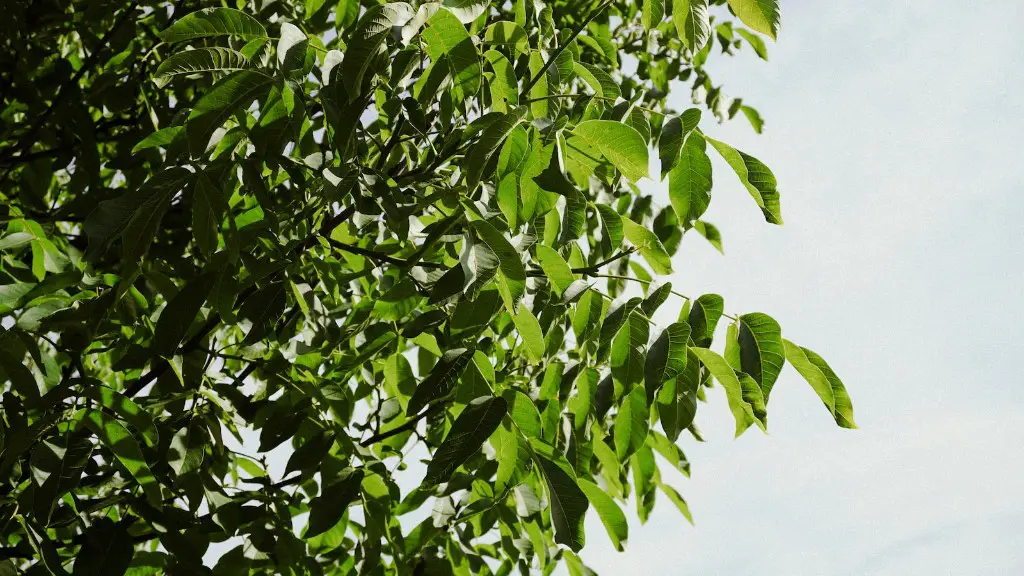Preparing the Soil
Growing an avocado tree requires proper soil conditions. To plant an avocado, start by choosing a pot with a diameter of at least 8 inches and a drainage hole at the bottom. The type of soil is important — a combination of potting soil and perlite is recommended. The soil must be porous to allow proper drainage while keeping enough water and nutrients for the avocado tree to grow. Place the pot on a drain tray to allow water to drain freely. To ensure that nutrients do not leach out of the soil, add compost, peat moss, or any other organic matter.
Planting the Avocado Tree
The most important step in planting the tree is selecting a healthy specimen. Look for an avocado with evenly-colored green skin and a firm, but not hard, texture. If the seed coat is brittle, it’s likely too old to use. Remove any stickers or labels from the fruit.
Carefully examine the seed for signs of disease and damage before you begin planting. Before planting the seed, lightly wet the area surrounding the seed. This will help to retain more of the moisture from the soil.
To plant your avocado, create a hole in the soil large enough to accommodate your seed. Ensure the hole is deep enough so that the bottom of the seed (the pointy end) is not visible. Next, firmly place your seed in the hole and stabilize it so it doesn’t shift. Backfill the hole with soil and lightly press the surface of the soil around the seed to ensure that it is stable.
Caring for the Avocado Tree
The environment in which your avocado tree is planted is important. Make sure it gets plenty of bright, indirect sunlight, and that the temperature remains consistently between 60–80 F. The soil should remain moist, but not wet, and you should water it regularly. A good way to water is to thoroughly saturate the soil and then wait until it has dried before repeating the process.
To ensure that your avocado tree is getting all of the nutrients it needs to grow, it is important to fertilize it regularly. Use a fertilizer that is meant specifically for avocado trees. Follow the instructions provided on the package.
Maintaining the Avocado Tree
It’s important to prune the avocado tree properly. Avocado trees can grow quite large, so it’s important to prune the growth to maintain a healthy size. To prune the tree, start by removing any dead or damaged branches. Next, prune back any branches that are growing in the wrong direction. Finally, use pruning shears to remove any excess growth.
Harvesting the Avocado Fruit
The average harvest time for an avocado tree is six to twelve months from planting the seed. When the fruit is ripe, it will turn from green to a deep yellowish-green hue. Once the avocado is ripe, gently twist it off of the tree and it is ready to use.
Pests and Diseases
Avocado trees are prone to a variety of pests and diseases. It is important to regularly inspect the tree for any signs of infestation. If left untreated, pests and diseases can cause a lot of damage to the tree. The most common pests that attack avocado trees include aphids, mites, mealybugs, and scale. Common diseases include anthracnose, fungal leaf spots, and root rot. To prevent the spread of disease, make sure to clean up any fallen leaves and debris, and apply fungicides as needed.
Tips for Growing a Healthy Avocado Tree
Avocado trees can be a challenge to grow, but with a little bit of patience and some TLC, you can end up with a beautiful and productive tree. To ensure that your tree stays healthy, make sure to keep the soil moist, fertilize regularly, and give the tree ample sunlight. Prune the branches and inspect regularly for signs of pests and diseases. Lastly, make sure to harvest your fruit when it is ripe.
Protecting the Tree in Cold Weather
Avocado trees are native to tropical climates and can be damaged if exposed to temperatures below 40 °F. If you live in a climate that experiences cold winters, you need to take steps to protect your tree. The best way to do this is to place the container indoors or in a greenhouse during winter months. Remember to keep the soil moist and provide some light, but avoid over-watering.
Propagating the Tree
If you have the space and resources, you may want to consider propagating your avocado tree. You can do this by taking a mature avocado and growing a new tree from it. To do this, cut the avocado in half and remove the seed. The seed should be cleaned and dried for a few days, then placed in a pot filled with moist soil. It should be kept in a spot with bright, indirect sunlight and watered regularly. With a bit of care, the seed will germinate and produce a new tree.
Propagating with Cuttings
If you want to propagate your avocado tree with cuttings, you can do so by taking a cutting from a mature avocado tree. Start by selecting a shoot 3-6 inches long and cut the shoot from the trunk of the tree. Carefully remove any leaves from the stem and wipe down the stem with rubbing alcohol. Dip the stem in a rooting hormone and then place in a pot filled with moist soil. The soil should be kept moist, but not wet. If taken care of properly, your cutting should take root and produce a new tree.

